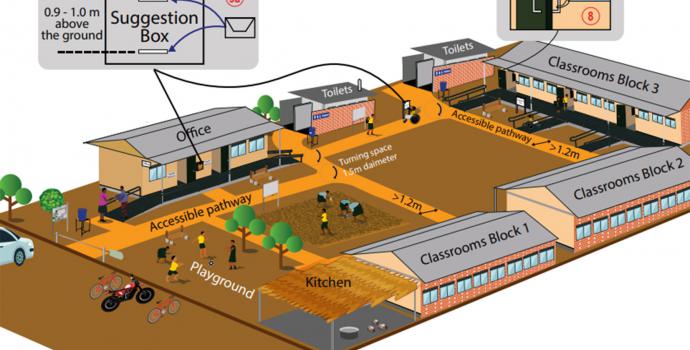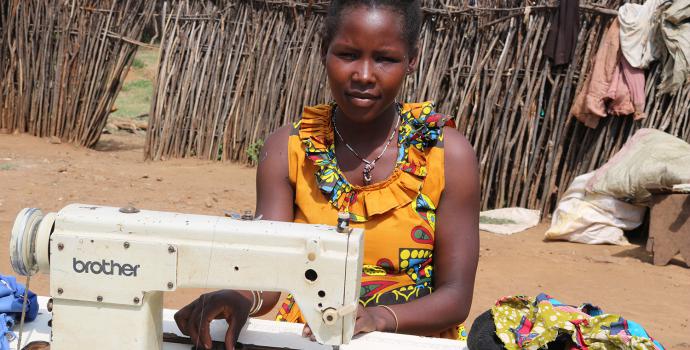New Global Childhood report shows progress in Uganda, but a long way to go

The likelihood of a child in Uganda dying before their fifth birthday has beenreduced by 66% since the year 2000, according to Save the Children’s new Global Childhood Report.
The report shows some positive progress overall, but warns that millions of children in Uganda are still out of school, go to bed hungry, cannot access adequate healthcare, and suffer from child marriage and teen pregnancy.
The report ranks 176 countries on children’s access to essential services and protection from harmful practices. According to the findings, Uganda has shown the twentieth biggest improvement worldwide over the past two decades – largely thanks to progressive policies and investment in development.
However, despite this, Uganda has fallen six places in the rankings since last year and is now listed 136th out of 176 countries. Although Uganda has progressed, its overall scores remain low and other countries in the region – in particular Rwanda and Ethiopia – have shown faster progress.
The report is published as Save the Children marks its centenary. The organisation was founded 100 years ago in 1919. Today it is the world’s largest independent child rights organisation, working in more than 120 countries. It has worked in Uganda for sixty years, since 1959.
Globally, the report finds that more than a quarter of a billion children are better off today than 20 years ago. But it also shows that 1 in 4 children are still being denied their right to a safe and healthy childhood.
In Uganda the findings show mixed results, with significant progress and major ongoing challenges:
- Although under-5 mortality has reduced by 66%, it is still high and is double the Sustainable Development Goals (SDG) target. The neonatal mortality rate – the likelihood of death within the first 28 days of life – has shown no progress at all.
- While school enrolment has increased since the introduction of Universal Primary Education, almost one in four Ugandan children are still out of school. The poorest communities are often the ones excluded from access to education.
- Uganda has cut rates of stunted growth among children by 36% since 2000. However, more than a quarter of children in Uganda (29%) still suffer from stunting, which is caused by malnutrition and can have lifelong consequences.
- Child marriage has been reduced by almost one third, and community campaigns to end the practice are having an impact. But one in five girls still get married when they are children and the actual number of child brides has gone up due to the growing population
- Uganda’s adolescent birth rate is among the highest in the region. Giving birth young puts the lives of both mother and baby at risk, and makes it more likely that girls will drop out of school and become trapped in poverty.
Brechtje van Lith, Save the Children’s Country Director in Uganda, said:
“This report shows there is a lot of progress to celebrate over the past few decades, and we can see the impact that investing in development can have on children’s lives. We are moving in the right direction, but we are not moving fast enough. There are still far too many girls and boys in Uganda who do not have access to quality education or decent healthcare, and are forced into marriage or work when they are still children. Now we need to accelerate this progress to reach every last child. This is the time to increase investment in children or else risk this progress being reversed.”
The progress on health shows what can be achieved with the right investment. Across East Africa, government policies and development investment, including in insecticide-treated bed nets, immunization campaigns, dietary supplements, and programmes to encourage breastfeeding, have all contributed to the dramatic improvement.
However, budget investment in key child-focused sectors such as education is at risk of being reduced. The report calls on the Government of Uganda and international donors to ensure investment in these areas increases and keeps pace with the needs.
The report says that Uganda has introduced many positive laws and policies that could significantly increase progress for children, but these are not effectively resourced, implemented or disseminated. Legislation such as the Children’s Act, the National Child Policy, the National Child Participation Strategy, and the National Strategy on Child Marriage and Teenage Pregnancy, all face challenges and are under-resourced.
“On paper Uganda should be ranked much higher. But the challenge is in the implementation. People in many areas don’t know about these laws and they are rarely enforced,” said Brechtje van Lith.
Helle Thorning-Schmidt, CEO of Save the Children International said:
“A hundred years ago, following one of the most destructive wars in human history, Save the Children’s founder Eglantyne Jebb drafted the Declaration on the Rights of the Child. Today children are healthier, wealthier and better educated than ever before. While progress has been remarkable, millions of children continue to be robbed of a childhood. We now need to continue to push to reach every last child and ensure they receive the childhood they deserve. Governments can and must do more to give every child the best possible start in life. Greater investment and more focus is needed if we are to see every child can enjoy a safe, healthy and happy childhood.”
Notes to editors
- The Uganda report is available here.
- The full global report is available here.
- In comparison to its neighbours, Uganda’s ranking of 136 puts it behind Kenya (122) and Rwanda (125) but ahead of Tanzania (155), DR Congo (168) and South Sudan (172).
- The highest ranking countries in sub-Saharan Africa are Mauritius (52), Seychelles (82), Botswana (102), South Africa (113) and Ghana (117)
- The biggest improvements were made in some of the world’s poorest countries. Sierra Leone has made the biggest improvement since 2000, followed by Rwanda, Ethiopia and Niger
- Singapore tops the global rankings as the country that best protects and provides for its children, with eight Western European countries and South Korea also ranking in the top 10. The Central African Republic ranks last, with Niger – despite recent progress - and Chad rounding out the bottom three countries where childhoods are most threatened. South Sudan and DRC are also in the bottom 10 countries.




